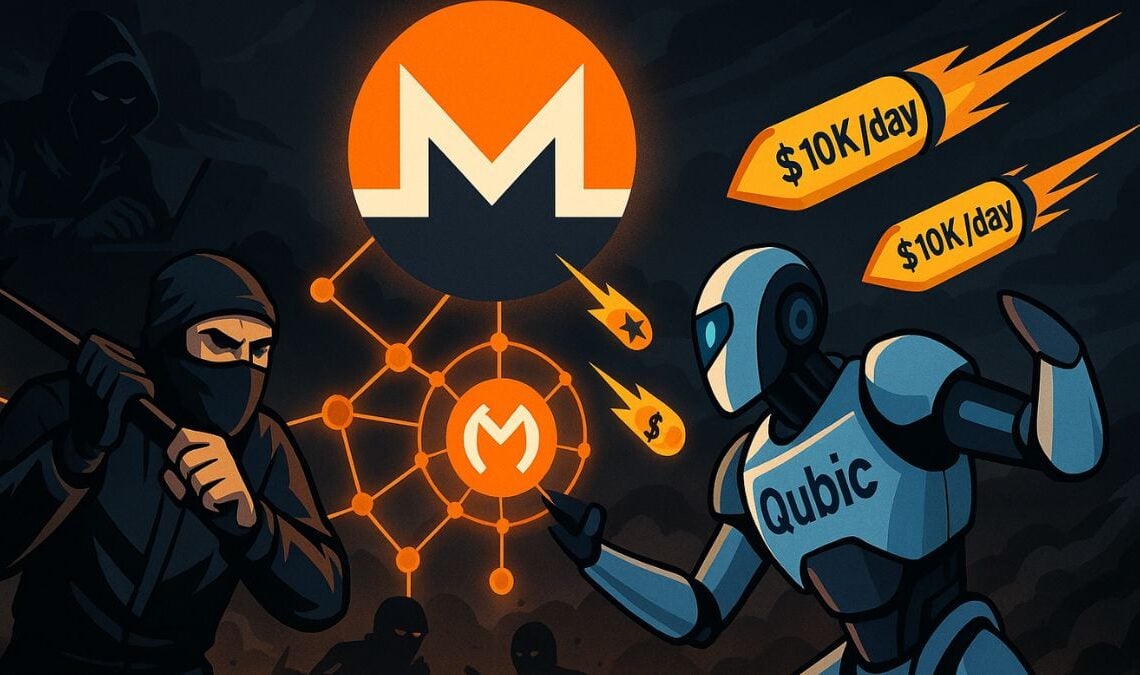The Monero Economic Attack has stirred serious debate in the privacy coin community and not without reason. A coordinated effort to undermine XMR’s decentralized mining has surfaced, revealing vulnerabilities in the network’s economic model. While the attack didn’t break Monero, it sent a clear warning: privacy doesn’t make you immune to manipulation.
Let’s unpack what actually happened, how the community responded, and what this means for XMR’s price and long-term holders.
What Sparked the Monero Economic Attack?
On July 27, crypto analyst @ddadybayo posted a striking breakdown: Monero’s daily network security cost is roughly $130,000 but theoretically, a malicious actor could gain majority control for as little as $7K–$10K per day by offering miners slightly higher incentives. That means for less than the cost of a banner ad on CoinDesk, someone could attempt to dominate one of the most private blockchains in existence.
5) How much does it cost to buy Monero?
— ddadybayo (@ddadybayo) July 27, 2025
– Monero’s daily security budget ≈ $130K
– Offer miners a +10% premium
→ For just $7K–$10K/day, you can buy majority control
📉 Less than an ad on CoinDesk.
📈 Enough to compromise the most private chain in crypto.
And that’s not just a theory.
Qubic, a mining project running on its own AI-focused protocol, allegedly redirected significant hashpower toward Monero, potentially threatening a 51% attack. This sparked deep concerns about economic manipulation rather than traditional hacking—hence the term “economic attack.”
The Community Responds: Transparency and Stealth Mode
The Monero community did not stay silent. Developer and long-time contributor @c___f___b detailed the next steps being taken to mitigate the situation, including an advanced stealth mining mode. These defensive upgrades involve:
- Masking hash rate reporting to prevent real-time tracking.
- Encrypting mining traffic to make it harder to analyze.
- Disrupting block production by orphaning outsider miners’ blocks.
A lot of people were asking how #Qubic was planning to do sustained 51% domination over #Monero if 50% of Qubic mining time must be spent on #Aigarth tasks. First I was answering "Let's make a surprise to $XMR miners", but then I realized that the #cryptocurrency community would…
— Come-from-Beyond (@c___f___b) July 25, 2025
While some of these changes are controversial, especially around transparency, they reveal a strategic push to harden the protocol from future attacks. Essentially, Monero is evolving from being just private in transactions to becoming economically resilient in its mining as well.
What It Means for XMR Holders
Despite the panic, Monero’s price has held steady. At the time of writing, XMR is trading at around $319, recovering from a local dip and maintaining a sideways consolidation over the past month.
This stability suggests that investor confidence remains intact. The community’s quick response helped ease fears, and the narrative now seems to be shifting from “Monero is under attack” to “Monero is adapting.”
Still, the question remains: Is this a sign of strength or weakness? On one hand, Monero’s ability to withstand the economic attack without crashing is impressive. On the other, the very nature of the attack suggests that proof-of-work privacy coins may need stronger deterrents than previously assumed.
Price Outlook: Is Monero Still a Safe Bet?
Looking at the chart, Monero is consolidating within the $300–$330 range after a sharp rebound from its June lows. If it breaks above $340, we could see a retest of the yearly high near $400. However, failure to hold above $300 may signal deeper structural concerns, especially if Qubic or other actors resume aggressive strategies.
Source: Trading View
Still, long-term holders should note: Monero’s fundamentals haven’t changed. The token remains a go-to asset for privacy-maxis, dark web transactions, and jurisdictions hostile to KYC. That utility, for better or worse, ensures a persistent demand floor.
Final Thoughts: What the Monero Economic Attack Really Revealed
The Monero Economic Attack may have failed in execution, but it succeeded in sparking a necessary conversation. It highlighted that even the most private networks are vulnerable not to code exploits, but to economic incentives.
XMR didn’t just survive this round it adapted.
That might be the biggest takeaway for holders: Monero’s value isn’t just in its code—it’s in its community’s ability to defend and evolve.

















